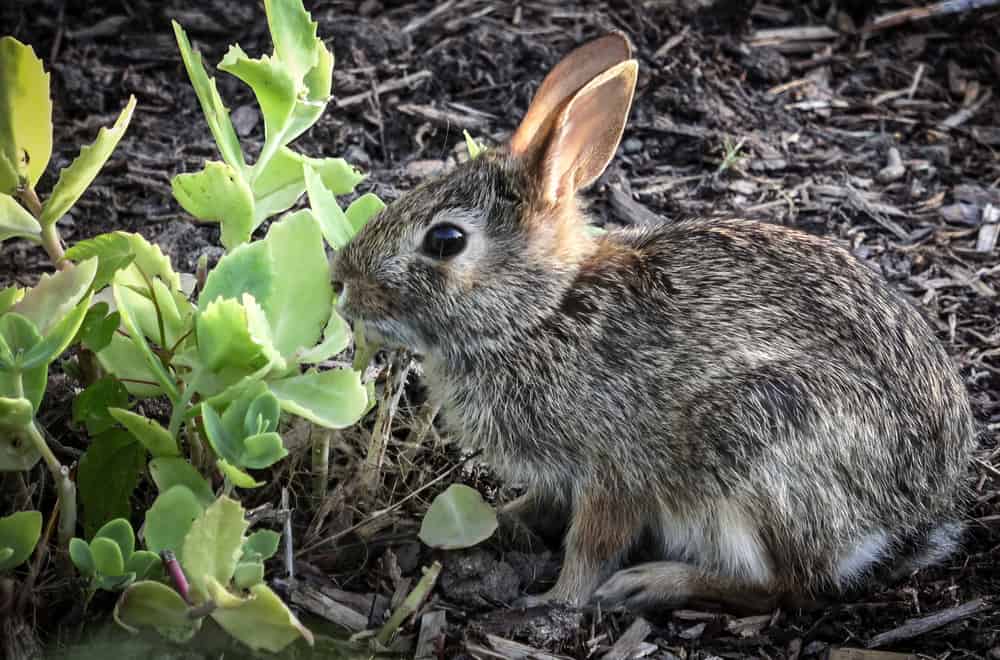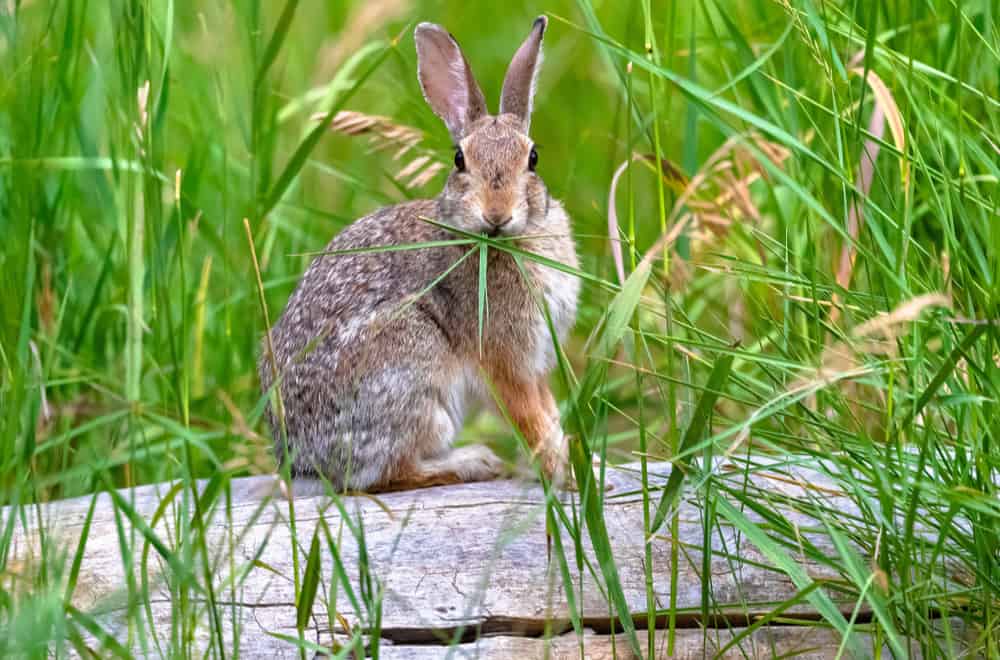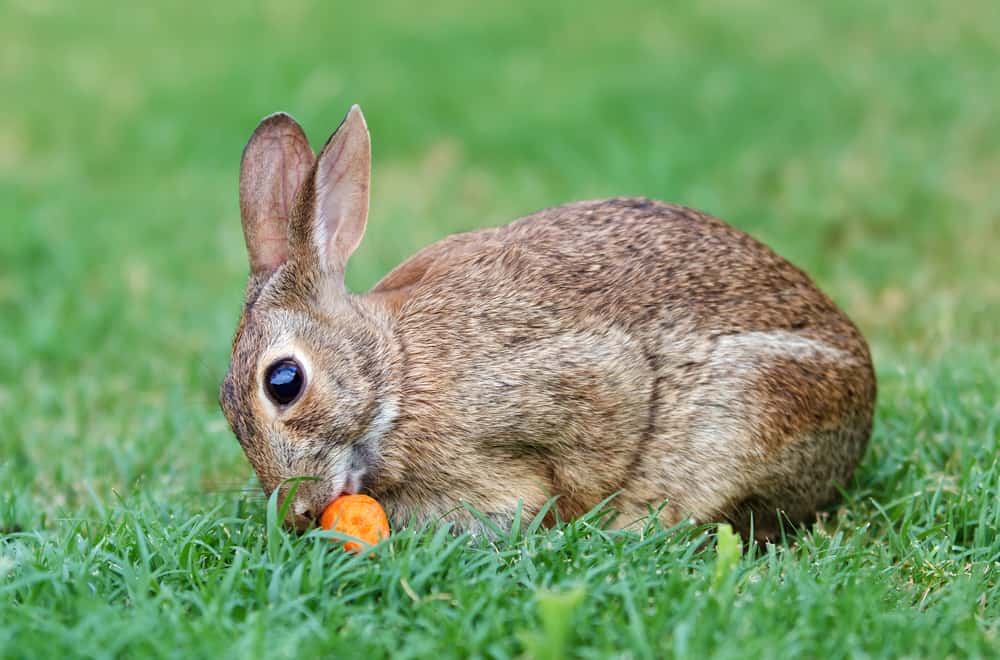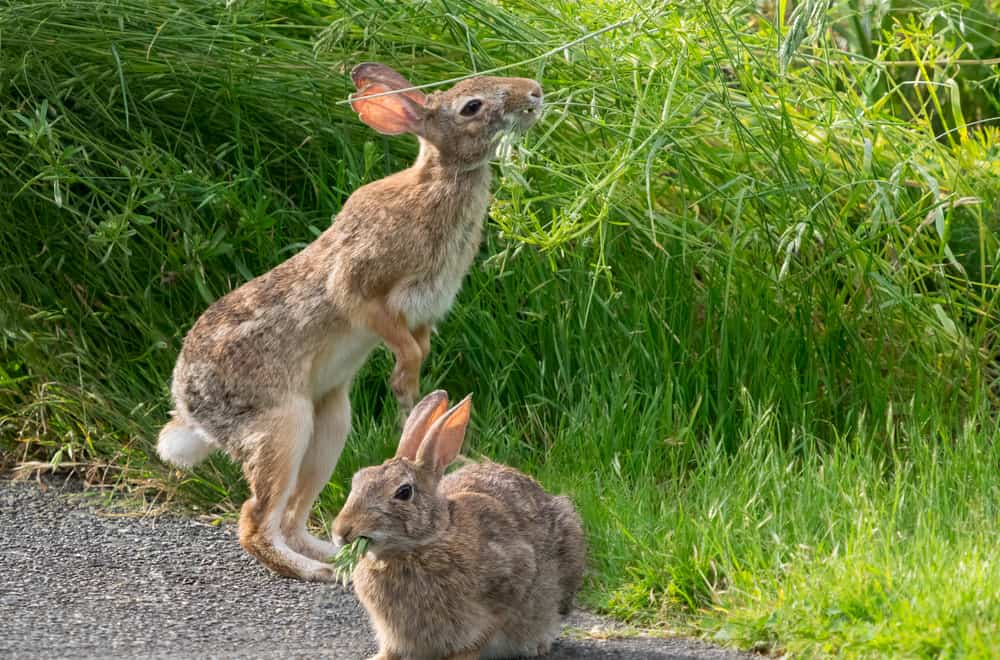What to Feed a 3 Week Old Cottontail
Do you ever wonder what cottontail rabbits eat in the wild? What kind of diet makes these animals to have strong large hind legs?
Well, you are about to find out. Here, we'll cover what do cottontail rabbits eat.
This type of rabbit is different from any other rabbit that people keep at home. What they eat will depend on various weather changes.
The behavior is also different from the rabbits that people keep. But it shouldn't scare you.
Ready? Let's start with cottontail rabbits eat in the wild.
What do Cottontail Rabbits Eat in the Wild?

Like other types of rabbits, these rabbits are herbivores. They can never pick to eat anything that isn't green, even if the climate isn't good. So, before we look at what these rabbits eat, let's learn more about their eating habits.
Eating Habits
What these animals will eat depends on the climate. The foods they eat during the cold season aren't the same as what they'll eat during summer.
Also, it will depend on the breed. New England cottontail rabbits have quite different ways of feeding compared to the Eastern cottontail rabbit.
The Eastern rabbits love to use open fields to eat their meals. But the New England ones like to eat from small bushes and thickets. These are places that have more vegetation.
During summer, it's when you'll expect them to have the same habits of eating. They'll all feed on grass and leaves. During winter, they eat tree bark and twigs.
Remember, they all like eating twice a day. They wean the young rabbits when they are three weeks old. After they reach seven weeks old, the young ones will now be free to go and look for food on their own.
As for the young ones, they enjoy milk with many nutrients. Before weaning, the dies allow them to suckle about 3 to 5 times a day.
Foods that Cottontail Rabbits Eat in the Wild

The foods that these rabbits eat are nothing but the greens available in the wild. Both the Eastern and New England rabbits eat the same things. So, below are foods they eat and how it helps them.
- These rabbits love eating grasses. Like many other herbivores, grasses help these wild rabbits get proteins, vitamins, sugars, and fats.
Proteins that come from grass help them grow fast. It won't matter if it's dry or fresh. These proteins will also help the rabbits to repair body parts if they get an injury.
As for the females, grass helps them get more minerals and vitamins to make milk. The more the females keep eating green grass, the better milk they make.
Grass also gives the more energy to move around. It will come from carbs, fats, and proteins.
Leaves and herbs help them get more vitamins A, K, and C. Remember, these vitamins help them build their eyes, blood, and immune system.
The herbs and leaves help them have better antioxidant qualities. Well, it's because they have some elements that help their bodies become better.
Also, as they eat the herbs, cottontail rabbits will have better heart health. It means they can have a better lifespan.
- They eat legumes. It's something that helps them get more minerals and proteins. These minerals like calcium and phosphorus help have strong bones, especially the ones for the hind legs.
Also, these rabbits get vitamin B from eating legumes. This nutrient helps the rabbits have a better immune system.
Vitamin B can also help cottontail rabbits grow more fur on their body. It suits the young ones during weaning.
- They eat bark and twigs from trees for more nutrients. The foods give them more salts and minerals in the body. Twigs help the rabbits have better tooth health. They'll be nice and short. As they chew the twigs, it improves their appetite.
Barks of trees and twigs give the rabbits more fiber in the body. So, it means they'll have a better digestive system.
- Cottontail rabbits eat fruits and vegetables. Like any other herbivore, it helps them get more vitamins and minerals in the body. Fresh and green vegetables keep the rabbits happy. Their immune system will be better.
- Sometimes, cottontail rabbits love eating their fecal matter. Yes, it's a bit weird. But it helps them get many vitamins and minerals back to the body. They'll even have better bladder and kidney health.
Facts about Cottontail Rabbits
Cottontail rabbits don't have the same traits and look like other normal rabbits. They will always prefer living in the wild.
Their love for the wild areas is what makes them a bit hard to be kept as pets. So, read on as we start with facts about their habits.
Habits

The habits of these animals allow them to live well in the wild. Also, it's where they keep themselves safer.
But they have interesting habits. Take a deeper look at them.
These rabbits love to stay in the night. It won't matter if it's during the summer or winter. But they are also active at the crack of dawn.
During the day, these animals like to stay deep in the bushes. It keeps them away from possible predators in the wild.
Remember, during tough weather conditions, they won't hibernate. What they do is look at wood caves that aren't in use and then hide in them. They also use these places as their hideouts.
Also, most of the time, they are silent. But these rabbits talk to one another through purrs and grunts.
These sounds come when they stump the ground using their hind legs. Remember, the sound will be louder when an enemy is close. It will be one way for them to alert themselves to hide.
The rabbits will freeze as a way to defend themselves from an enemy. They will sit still. So, the predator will then go away.
Cottontail rabbits like moving slow and in short steps. But when they sense any danger around, they'll run at 18 miles an hour. Also, they tend to do a hip-hop run to confuse the enemy.
Also, cottontail rabbits can swim well. Remember, they don't drink a lot of water.
These wild rabbits love to stay in areas of a small size, which is 10 acres or even less. It will be hard for the predator to attack them in such places.
They also love to stay in areas with a brushy cover. It will give them more food and coverings for their young ones.
Biology

Cottontail rabbits have bodies that suit them to stay away from their enemies. Keep reading to see more facts about the biology of these wild rabbits.
The name cottontail rabbit comes from their looks. Their tails look more like cotton wool.
Cottontail rabbits have stocky and large hind legs. They use these legs to hop and jump faster when they sense danger.
They have better eyesight and hearing. It explains why they have long ears. Well, these qualities come from the foods they eat in the wild.
As for the Eastern rabbits, their eyes come out a bit from the head. So, they have almost a wide vision of about 360 degrees.
When it comes to the sense of smell, they have many scents. Well, it's because they twitch as they smell.
Their teeth are always growing. They use these teeth to grind to show that they are happy.
These rabbits have different fur colors. Some furs have a red-brown color, while others have a grey-brown. But under these furs, the main color is white.
The two species, New England and Eastern rabbits look alike. The difference comes in fur colors.
Eastern breeds have a white star on their forehead. The New England don't have this white star on their face.
Also, a mature New England cottontail rabbit can weigh from 1.6 up to 2.9 pounds and a length of up to 18.8 inches.
As for the Eastern rabbits, they are bigger. They can weigh from 1.8 to 2.9 pounds. But they are a bit shorter than the New England ones.
When it comes to the females, expect the does to gestate in less than 30 days. One doe can give birth to three liters. They can get pregnant at one month old.
If a doe wants to give birth, it will get a safe hole or rock. Sometimes, the doe will dig a spot that is at most 4 inches into the ground. After that, it can add more dry grass and brushy items.
Also, as the young ones are born, they are never with any fur on their bodies. So, it's why the does will strive to give them a warm place during birth.
Conclusion
Cottontail rabbits are animals that love to stay in the wild. You can try to keep them as pets, but it will be hard for you. The name comes from the looks of their tail.
They love to feed more on greens like grass, fruits, vegetables, barks of trees, among others. These rabbits are full herbivores.
Their legs suit what they love doing. It's to jump when they sense any slight danger.
Also, they love to stay in brushy places. Well, it's to help their young ones be safe during birth.
So, have you ever seen these rabbits in your garden or farm? What experiences have you had with them? Would you please share them with us?
caldwellbastoofter.blogspot.com
Source: https://www.atshq.org/what-do-cottontail-rabbits-eat/
0 Response to "What to Feed a 3 Week Old Cottontail"
Post a Comment